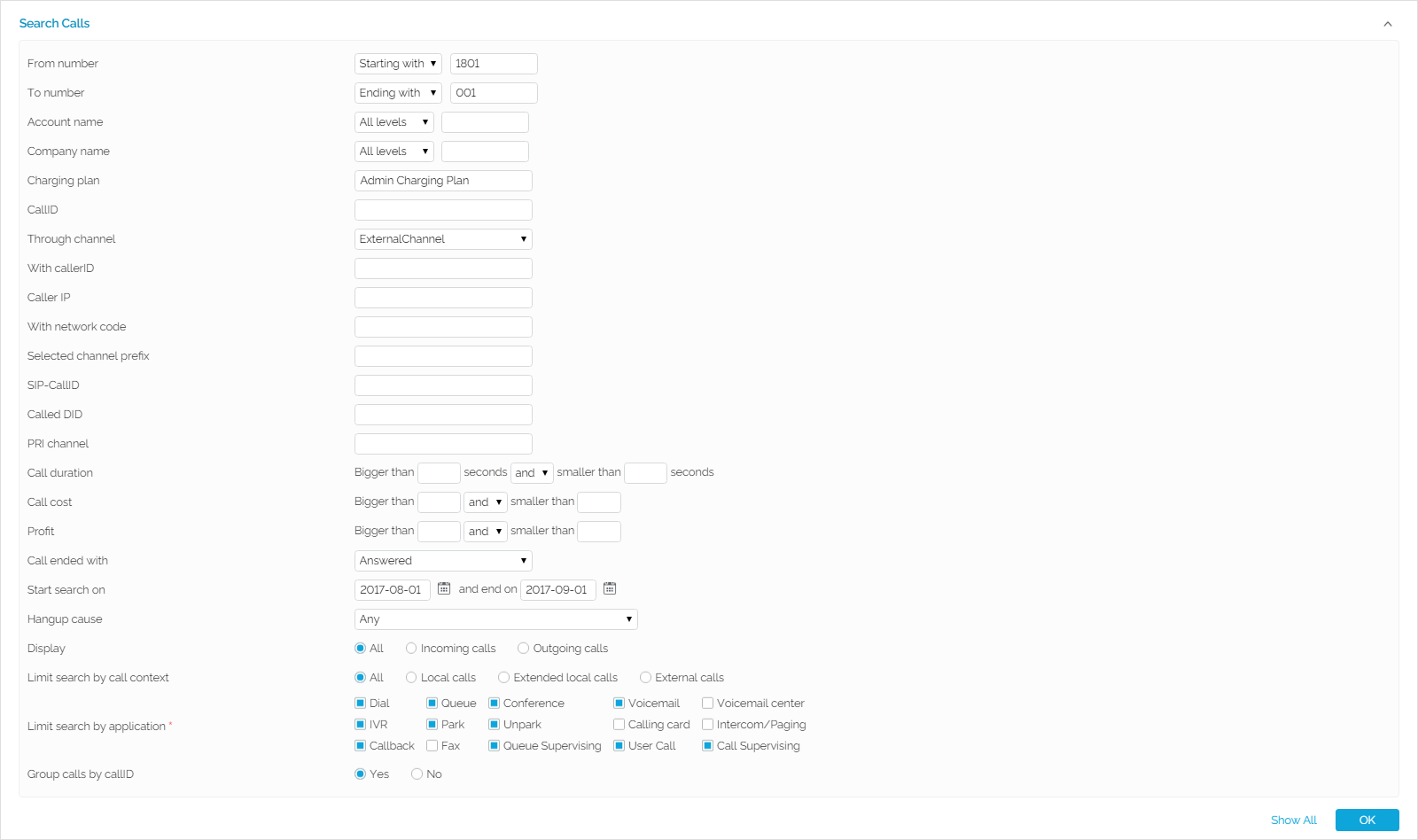
Applies to VoipNow 5.X.X! |
If you have a business or a contact center with a high call traffic, VoipNow’s Call Reports feature allows you to automatically keep track of all the incoming and outgoing call flows. This tool enables you to monitor and assess your agents’ performance as well as track overall call costs with zero effort.
This article explains the information gathered in Call Reports based on your selected criteria. Also, you will learn how to export these reports in case you need them in other formats, i.e. .xls or .csv.
To access this feature, go to VoipNow's main menu, select Call Reports, then click the Reports tab.
The Call Reports area is divided into three sections:
Export Columns, where you can select the columns that you want to see in your exported report.
Call List, where you can view the current month's calls registered in the system.
In the Search Calls area, you will find a large set of filters that let you drill down call statistics to the smallest detail.

From number
This filter allows you to narrow the report to calls from specific phone numbers. From the drop-down list, you can select calls placed from numbers Starting or Ending with specific digits. Or you can select Exact match and enter the exact phone number placing the calls.
To number
Just like the above-mentioned filter, you can set the report to record only calls placed to certain phone numbers - starting or ending with specific digits, or matching an exact full phone number.
Account name/Company name
You can indicate the name of the company and of the account (of the service provider, organization or user), whose calls you want to see in your report.
Charging plan
This filter lets you track strictly the calls registered under a specific charging plan.
CallID/Through channel
The report can track calls based on the unique number that Asterisk generates to identify them, i.e. the CallID. Also, if you want to analyze only calls placed through a specific channel, you can select it from the Through channel drop-down list.
With CallerID/Caller IP
You may track calls based on the CallerID and/or the Caller IP of the person who placed them.
With network
You can track calls by specifying the network code in which the calls were placed (defined on Channel Cost). The report will only track the calls placed in that specific network.
Selected channel prefix
This filter applies only for external outgoing calls. This is where you can indicate the prefix of the dialed number that was matched with one of the area codes that you have defined in the routing channel's costs.
Let's assume the user dials the external number 8010400 and the channel that routes the call has defined 2 costs:
Since area code 801 is the closest matching prefix for the dialed number, the caller will be charged 0.5 USD. If the entry corresponding to 801 would have been deleted, the closest matching prefix would be 80 and the caller would be charged only 0.2 USD. Assuming this was an error caused by the administrator; when updating the channel costs, the administrator forgot to delete the entry corresponding to 801. This error would be hard to trace if the channel had more than 20 costs defined. |
SIP-CallID
This filter lets you track calls based on their SIP specific CallID (unique for each call).
Called DID
This filter refers to the called Direct Inward Dialing (DID) number.
PRI channel
This field is where you specify the identification number of the PRI card that contains the channel through which the call was made.
Call duration
You may filter calls by their length. Just fill in the time limits in the Bigger than <x> seconds and/or smaller than <y> seconds rule.
Call cost
You may also filters calls by their costs. Set the cost limits in the Bigger than <x> and/or smaller than <y> rule.
Profit
To narrow calls by profit, set the limits in the Bigger than <x> and/or smaller than <y> rule.
Call ended with
This filter is very helpful, because it allows you to track calls based on how they were handled. From the drop-down list you can set the report to track only the calls that were answered or missed, the calls that could not be answered because the callee was in another conversation, the calls that could not reach their destination, the calls that were not authorized to reach their destination. You can even identify the calls with an unknown resolution.
Start and end search on
Click on the calendar icon to set a time interval for your report.
Hangup cause
This filter lets you narrow calls by their hangup cause. You have close to 50 hangup causes to choose from the drop-down list. For more info, read the Hangup Causes section in this page.
Display
You may have your report track only incoming, or outgoing calls.
Limit search by call context
This filter distinguishes between local calls, extended local calls and external calls. Local calls refer to those made between extensions that belong to the same organization. Extended local calls refer to those made between extensions thatn belong to different organizations. External calls refer to those received from/made to destinations outside the VoipNow.
Limit search by application
VoipNow lets you track calls based on the application used by Asterisk to handle them. Simply select the checkbox of the filters you're interested in.
Dial – Displays the calls between two phone terminals.
Group calls by callID
A simple phone call can be split into several legs, depending on the parties involved in the conversation. These call legs have the same callID.
Select Yes, if you want all call legs to be grouped into a single table entry, i.e. one head row with details like overall Call Duration, Call Cost and Profit. Please note that the rest of details in the head row refer strictly to the first call leg (the party that initiated the call).
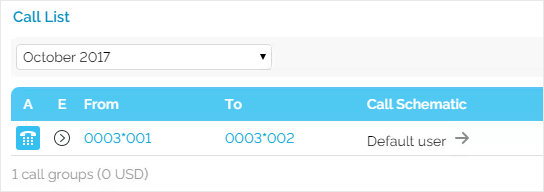
To see call leg details individually, go to the head row and click the Expand icon in the E column. Each call leg will be displayed on a separate table row with details like caller, callee, call schematic, the time the call was initiated and answered to, etc.
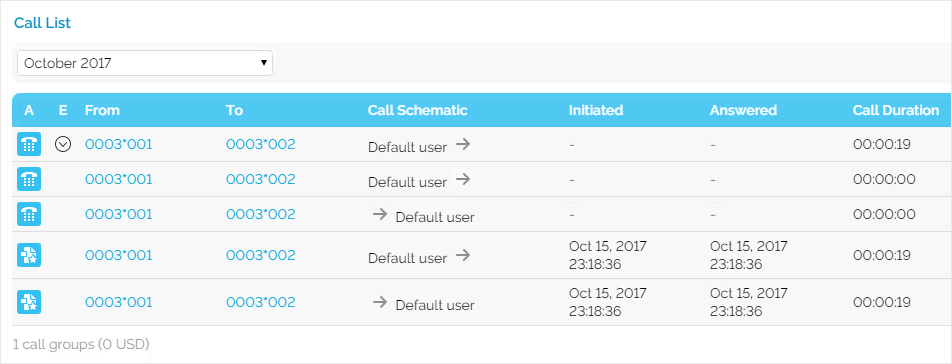
If you select No, the report will show each call leg in a separate row.
By default, the Call List displays the current month's calls.
If you want to see the call list of a previous month, select it from the drop-down list at the top of the table. If you want to see the list of all calls, from the same drop-down list, select "–".
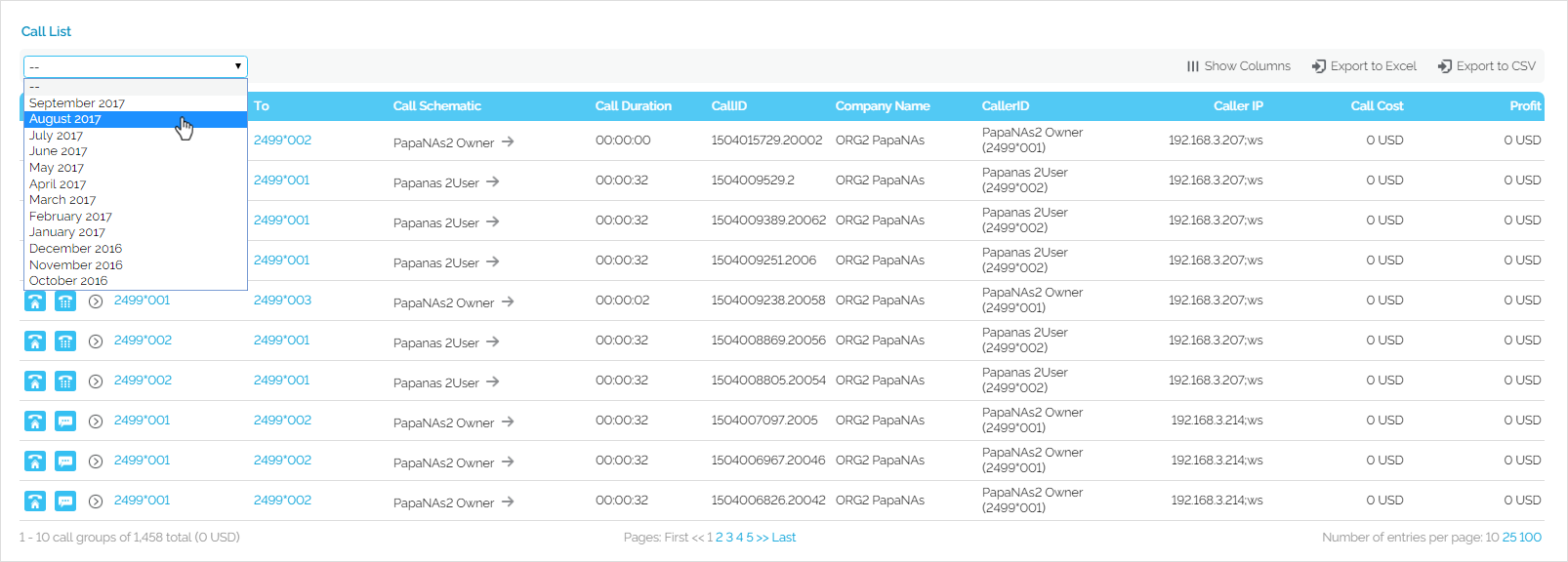
Please note that some of the columns in this list might not by displayed by default. To change the columns you want to see displayed, click the Show columns icon and, from Table Layout pop-up select (or deselect) the columns you're interested in. Press Apply when you're done and the Call List table will show your selected columns.
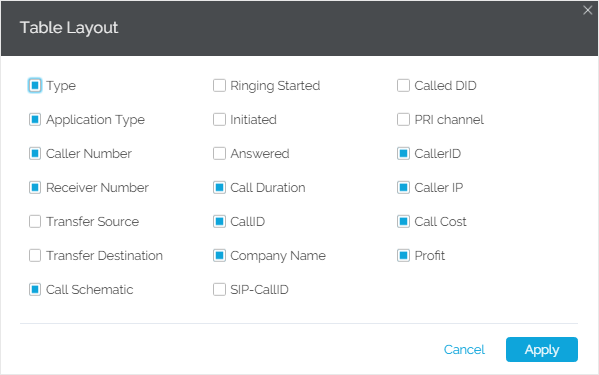
VoipNow lets you export calls reports in .xls or .csv formats. If you don't need to export the full report, but only parts of it, you can select the columns you're interested in.
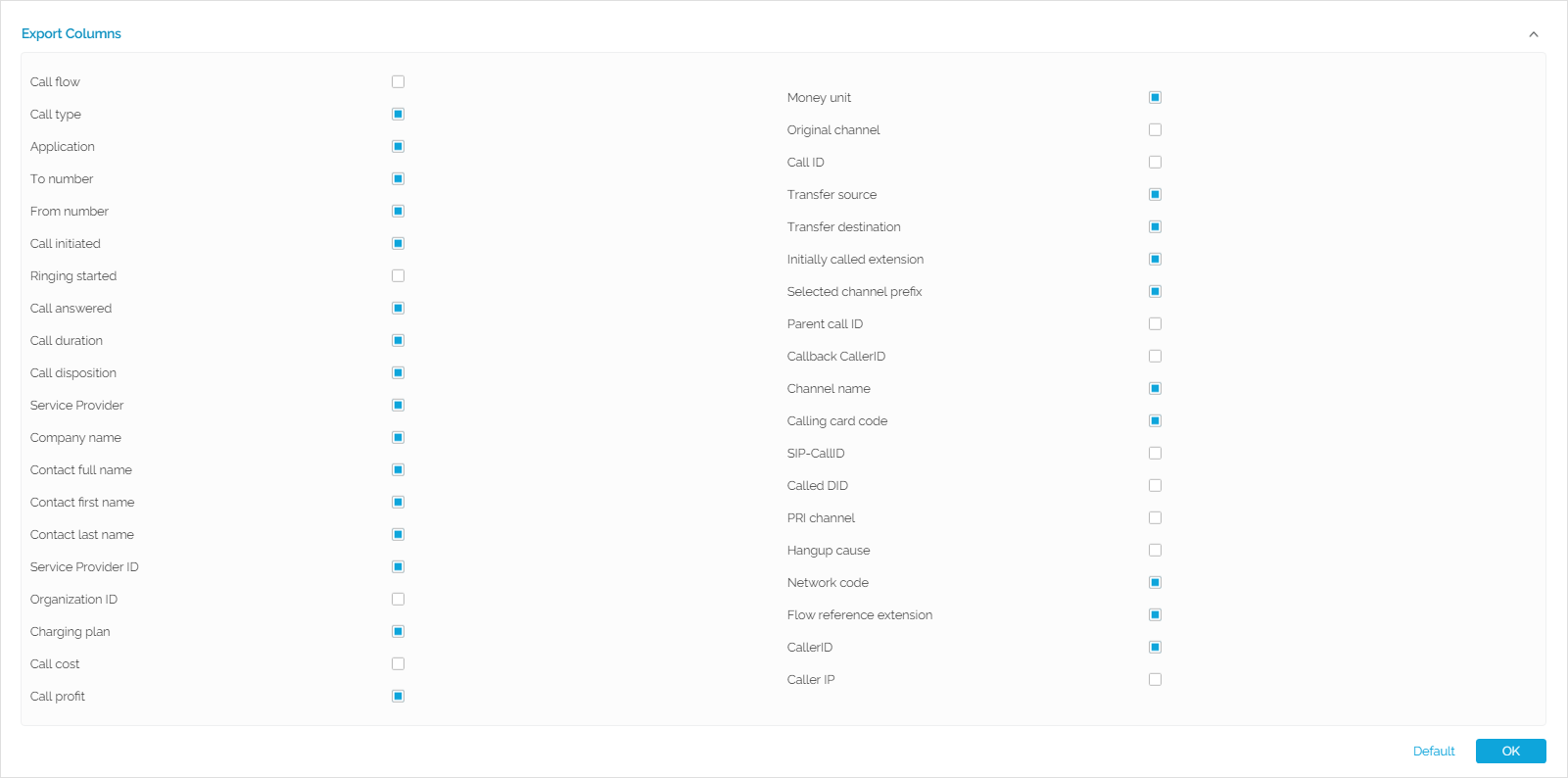
STEP 1: By default, the Export Columns section is minimized. To expand this section, click the arrow on the right.
STEP 2: Select the columns you want to see in your exported report and press OK.
STEP 3: Then press the Export to Excel or Export to CSV button at the top right of the Call List.
Most of these Export Columns have already been explained in the section dedicated to understanding filters. Other than those, you can choose to export the following report columns:
Call answered - The date and time the call was answered. If the call was not answered, VoipNow records the 0000-00-00 00:00:00 value.
Call disposition - The way the call was ended, i.e. answered, not answered, failed, etc.
Money unit - The currency currently used for charging.
Original channel - The channel used to route the call.
Call ID - The unique ID of the call generated by VoipNow.
Transfer source - If the call was transferred to another extension, this column lists the source extension.
Transfer destination - If the call was transferred to another extension, this column lists the destination extension.
Initially called extension - If the call was picked from another extension, this column lists the extension that was originally called.
Parent call ID - It refers to the number which originated a received call. This is useful for tracing phone calls that have multiple entries in the call cost table. For example, when a call that is received by an extension and transferred to another, the system records two separate entries and gives the impression that two different calls have been made.
Callback CallerID - If the caller used a callback extension to route its call to a remote destination, this column displays the authorized callerID (the number from which the user dialed the system).
Calling card code - If the caller used a calling card to call a destination number, this column displays the code introduced to authenticate and charge the call.
Flow reference extension - The extension that initiated an outgoing call or the extension that received an incoming call.